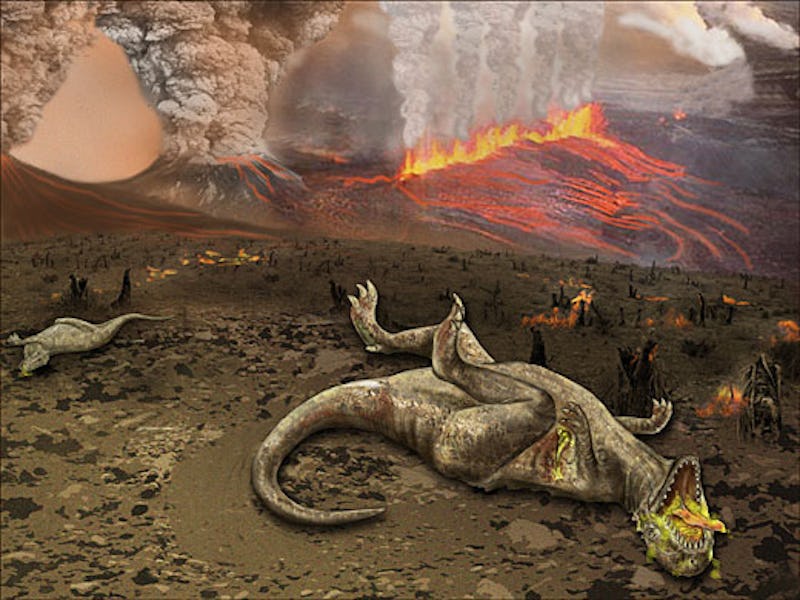The Asteroid That Killed the Dinosaurs Also Created a Massive Volcanic Eruption
New study reconsiders that one time the universe got a little too excited about catastrophes.

About 65 million years ago, the dinosaurs went extinct. We know this. And scientists suspect the reason was an asteroid coming to an abrupt halt just off the Yucatan Peninsula. But new research suggests there was another layer to the cataclysm: The asteroid hit the earth so hard that it spurred a massive volcanic eruption on the Indian subcontinent that helped eradicate other dinosaurs who might have survived as well as killing 70 percent of the Earth’s entire species.
At least those are conclusions from a new study published Thursday in Science, authored by American and Indian researchers spread across the globe.
The consensus among scientists is that a huge asteroid crashed into the planet and spurred the mass extinction of life at the end of the Cretaceous period, and resulted in the Chicxulub crater at the edge of the Yucatan peninsula in Mexico.
At the same time, India was rife with volcanic activity in a place known as the Deccan Traps, a 200,000 square mile region that used to be basically covered in lava flow. More than 65 million years ago, the Deccan Traps began forming after a series of volcanic eruptions that are thought have lasted about 30,000 years.
The Deccan Traps, east of Mumbai
The asteroid isn’t thought to have outright caused the initial volcanic eruptions, but rather augmented the intensity. The impact from the Chicxulub crash most likely caused earthquakes of about a magnitude 11, which would have shaken the planet’s crust up enough so molten rock could begin flowing out. The more magma was flowing up to the surface, the more unstable the things got. Cue explosions, fire, and dinopocalypse.
The research is an early stepping point to bridging the gap between the asteroid and the volcanic activity. Scientists will need to do a lot more work before we have a better picture about how all of this went down long ago. What’s for certain is that both of these events, individually, were capable of profoundly changing the world as it was. The odds of them happening together are extraordinarily rare — and the consequences were that much more transformative for the future of the Earth.